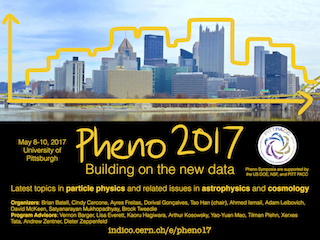Speakers
Description
As discussed in the previous talk, tools from information geometry can be used to understand and optimize LHC measurements. As an example, we calculate the maximum sensitivity of Higgs measurements to the dimension-6 operators of a Higgs effective field theory. The Fisher Information then encodes the maximum precision with which the theory parameters - in this case the Wilson coefficients - can be measured. In particular we consider Higgs production in weak boson fusion with decays into tau pairs and four leptons. We find that crucial information comes from the high-energy tails as well as from angular correlations between jets, while the decay kinematics hardly adds any information. Tight cuts on the rapidity separation of the tagging jets throw away a large amount of discrimination power. While conventional analyses can probe new physics scales around 900 GeV in the early phase of LHC Run II, multivariate analyses have the potential to significantly enhance the sensitivity up to 1.2 TeV. We further discuss Higgs production in association with a single top quark.
